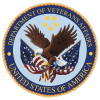In July 2024, VA informed Congress that the Veterans Health Administration (VHA) might need an additional $12 billion in funding in fiscal year (FY) 2025 to support medical care for the last three months of FY 2024 and all of FY 2025—primarily for community care, staffing, prosthetics, and pharmacy. In August, the OIG began reviewing the causes contributing to VHA’s subsequent request for additional funds, and in September, Congress passed legislation requiring the OIG to review the circumstances that led to VA’s announced funding shortfall.
The OIG found the FY 2024 President’s Budget, which included the advance appropriations for FY 2025, relied on outdated data and assumptions, including lower-than-actual costs for new medications and both direct and community care. Also, a legislative budget cap limited VHA’s ability to increase the FY 2025 advance appropriations, although leaders believed they could keep spending within funding limits by developing cost-saving options. The goals and options that emerged from a January 2024 financial sequester did not achieve the necessary cuts, such as reducing hiring and community care obligations. In August 2024, VA requested supplemental appropriations of $12 billion to cover medical care for the rest of FY 2024 and all of FY 2025. By November, VHA had revised this estimated shortfall to $6.6 billion for only the remainder of FY 2025. Congress passed a continuing resolution in mid-March 2025 to fund VA’s remaining FY 2025 medical care at $6 billion from the Toxic Exposures Fund.
VHA concurred with the OIG’s recommendations to review how VHA projects medical care budget needs (including staffing) and to develop an approach to form more accurate estimates; consider changes to allow program offices and other experts to weigh in on inputs for model projections; and conduct fiscal reviews at least quarterly to assess key cost drivers.


